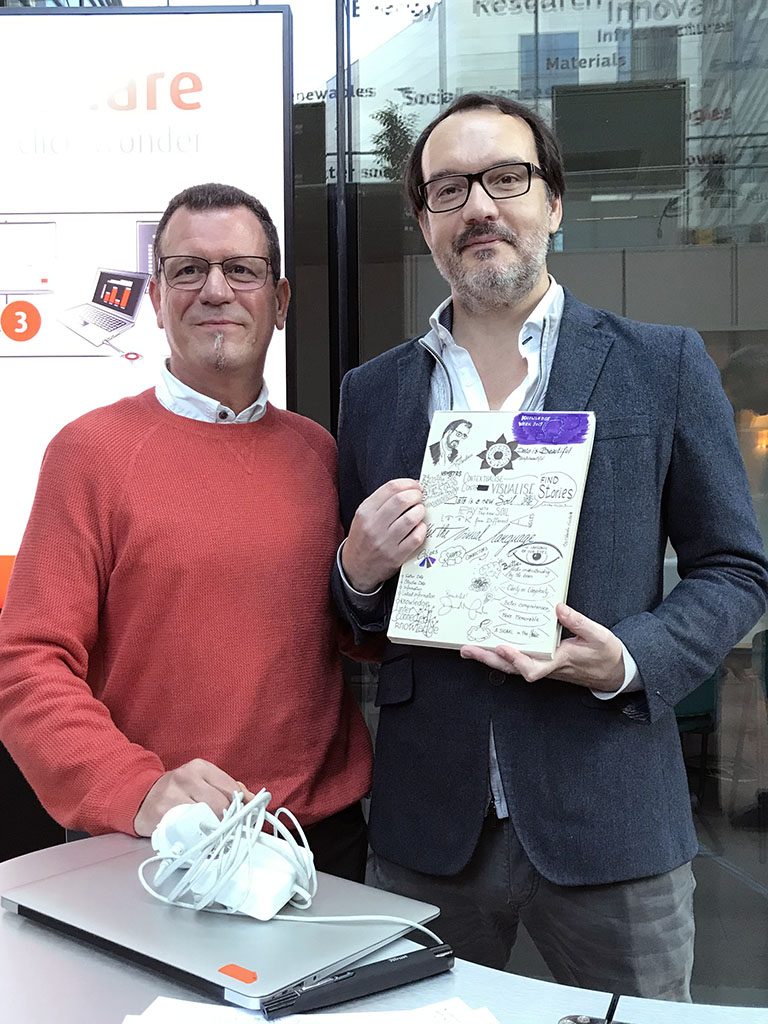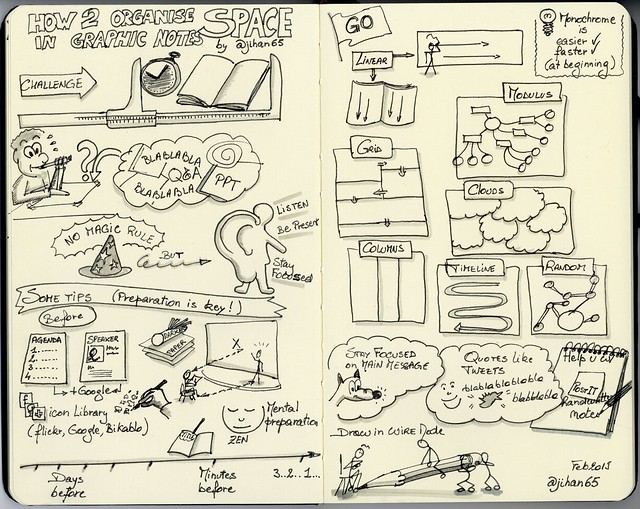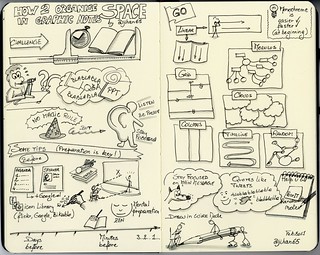13 December 2017, it’s a quarter past twelve. I am alone in a still empty conference center. I have the feeling of a cold and too big space. I don’t like that feeling before the start of a 2-day event where more than 150 communicators coming from all over Europe should engage into conversations about next year comm’s actions. The waterspouts that pound the ground and the stormy wind outside the large windows reinforce my feelings. My colleagues of the European Commission, Anne and Matteo, who organise the meeting should arrive soon. Participants and speakers will arrive in a couple of hours. Few time to change my feelings into another reality.
Silently I observe the large room. Its configuration. Hundreds of empty chairs around the lectern. The large screen on the wall shows a big Windows blue logo. Silence. I note that the walls are not suitable for drawing. Bad. I note that there is a lot of space available and the room is bright. Good.
I use the silence to focus. To center myself. To sense the space around me, its nuances. I try to sense what can follow. How my work as graphic recorder can help participants to enter more deeply into the topics that will be presented. How it can encourage them to open their minds and take an active part in conversations.
This reflection convinces me even more that I have to be visible; I will be in front of the audience. My visuals have be visible from afar; I will draw big. I have to try to warm up the atmosphere and minds; I will use warm colours.
With the help of a worker, who popped up at the right moment, we find large wooden panels in the stock. We install them against the wall in front of the audience, on the left of the large screen and of the lectern. From my position I can connect with the speakers and with participants. I install a roll of paper 4 meters long on the wooden panels.

With a string, I hang on a corner of the panel a little snowman doll (to be disruptive, not to be too serious, and also because the holiday season is approaching).
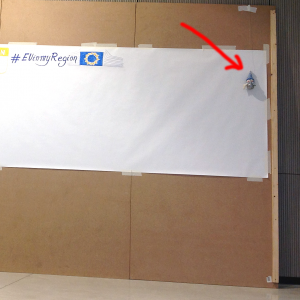
My markers and pastels are ready. The setup is ready. I feel ready. What will happen is the best that should happen.
My colleagues enter the room. Participants some time later. The meeting starts.
 Click the picture to enlarge it
Click the picture to enlarge it
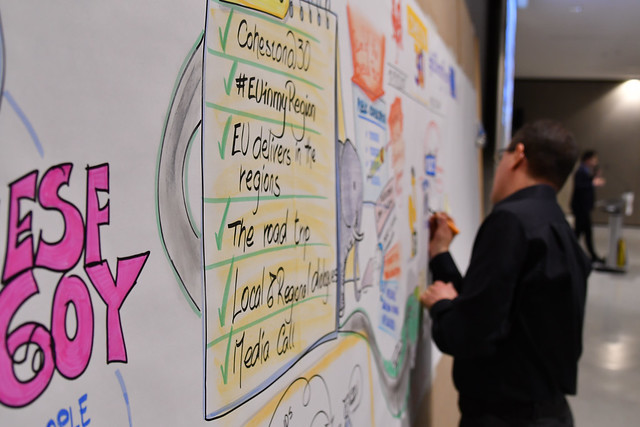 Click the picture to enlarge it
Click the picture to enlarge it
The next day, Catherine and Frederic, two colleagues-friends, come to help me in the graphic recording of the parallel sessions that I cannot cover.
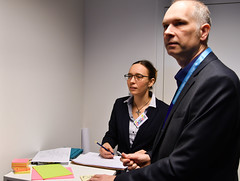
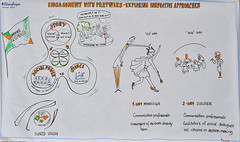

Click the pictures to enlarge them
At the end of the 2 days, we have filled up meters of paper with our graffiti, the visual essence of all presentations, discussions and debates.
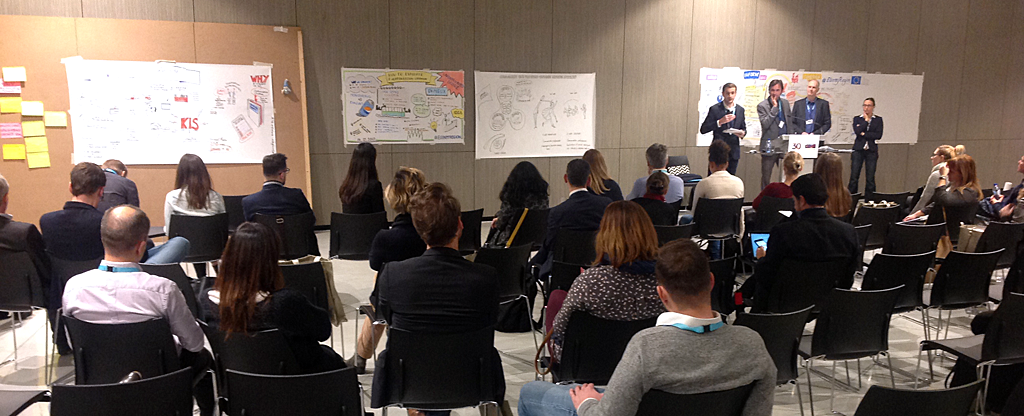
Being present from the beginning of the meeting, I have a huge fresco that sums up the two days:

Click the picture to enlarge it
Have my intentions (those of the previous day before everything starts) been reached?
I don’t know. But the comments that participants, speakers, my colleagues, shared with me during and after the event, make me think so. As well as the smiles and the sparkling eyes of some people (like Agnès, my boss) in front of the fresco.
I’m happy. Catherine and Frederic, my friends graphic harvesters, too. Anne and Matteo, my colleagues, too. A great collaboration.
I feel happy and grateful for what happened.
Notes:
The meeting brought together the two networks of communicators in Europe of EU Cohesion Policy, INFORM and INIO, and the expert groups of programme communication officers from two DGs of the European Commission, DG REGIO and DG EMPL. It took place in the Mons International Congress Xperience (MICS) on 13-15 December 2017. “Our graffiti”, the graphic harvesting material, are part of the final report that was shared with all participants. More than 80% of participants said in the satisfaction survey that graphic recording was useful for them.
